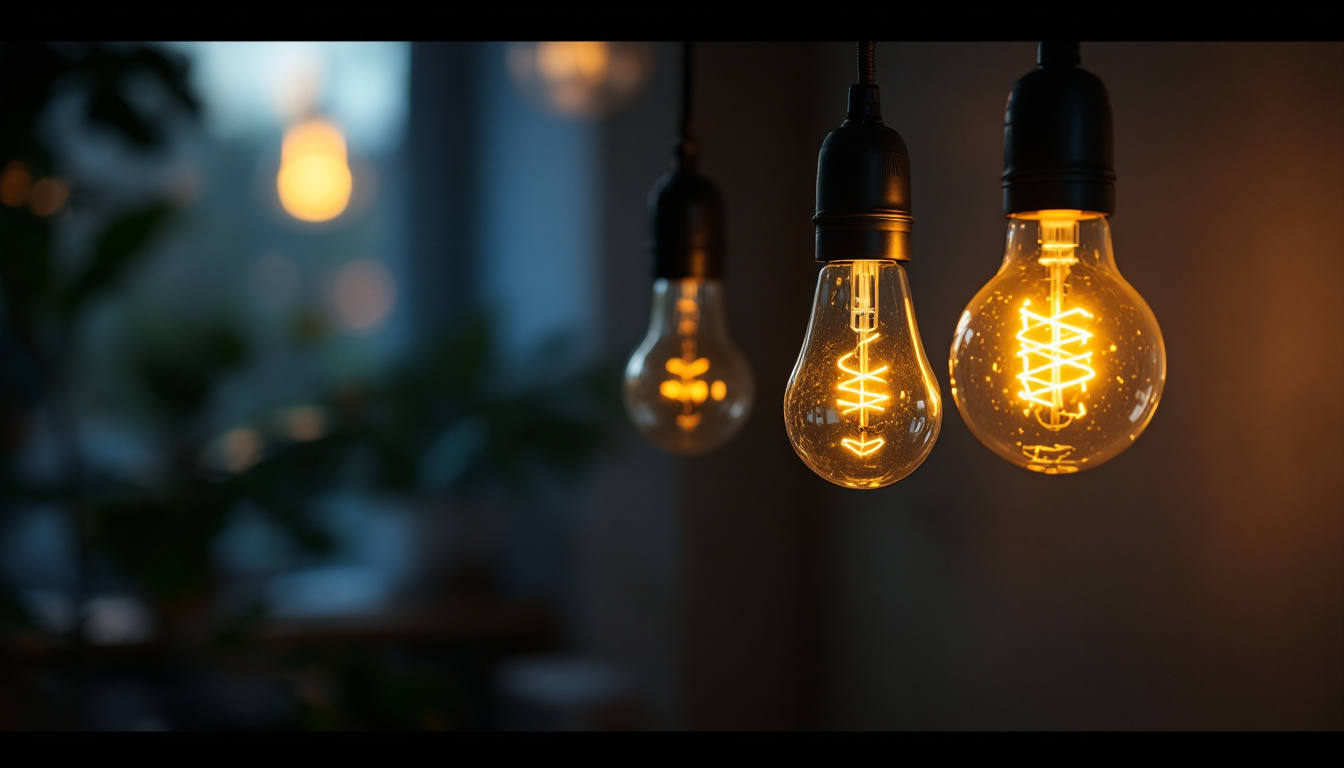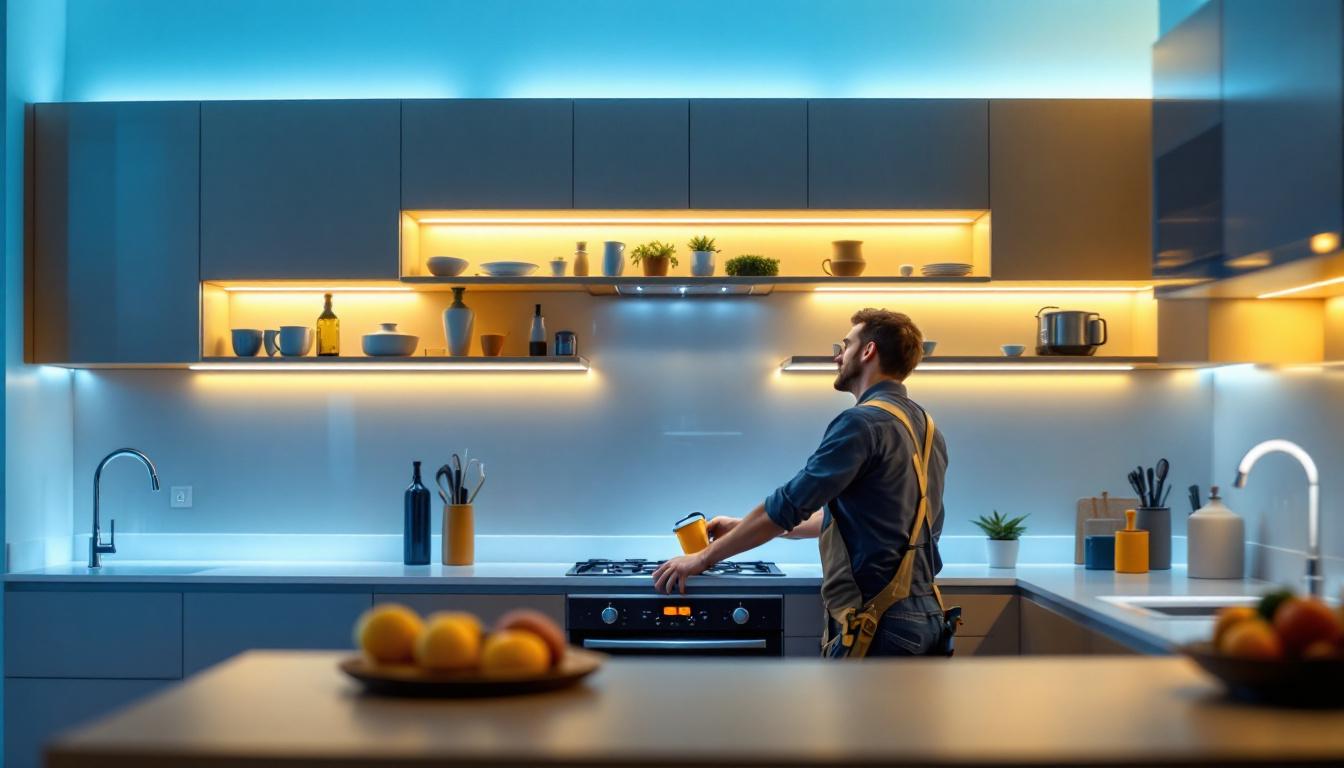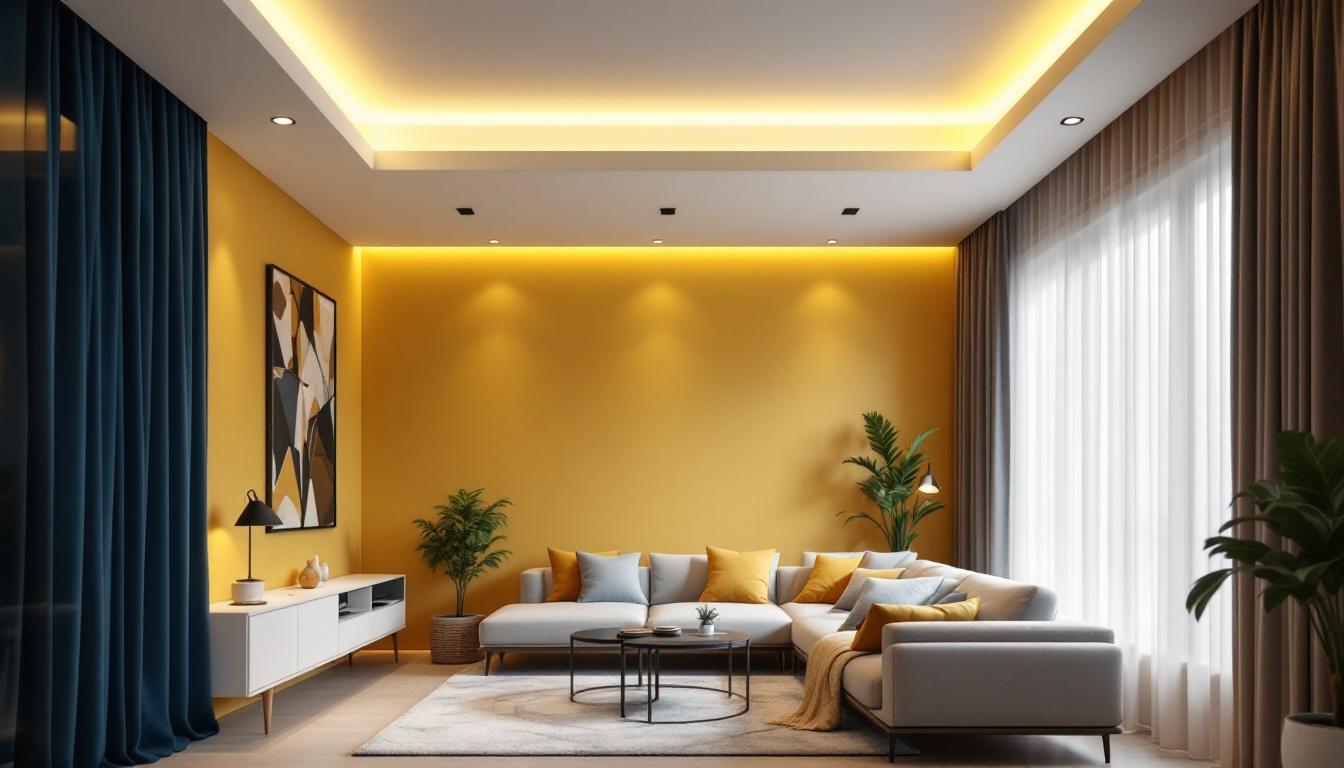
In the ever-evolving world of lighting, can lights—also known as recessed lights—have become a staple in modern design. The evolution of light bulbs specifically designed for can lights has significantly transformed the way spaces are illuminated, enhancing both functionality and aesthetics. This article delves into the journey of light bulbs for can lights, examining the technological advancements, the variety of options available, and the implications for lighting contractors.
recessed lighting has its roots in the mid-20th century, designed to provide a clean and unobtrusive lighting solution. Initially, these fixtures utilized incandescent bulbs, which offered a warm glow but were often energy-inefficient. As the demand for more versatile and efficient lighting solutions grew, the industry began to innovate. The sleek design of recessed lighting allowed it to blend seamlessly into ceilings, creating an illusion of spaciousness while providing ample illumination. This aesthetic appeal, combined with functionality, made recessed lighting a popular choice in modern architecture and interior design.
For many years, incandescent bulbs were the go-to option for can lights. Their warm color temperature and ability to render colors accurately made them popular in residential and commercial applications. However, the drawbacks were significant. Incandescent bulbs consumed more energy and had a shorter lifespan compared to newer technologies. This inefficiency prompted a search for alternatives that could meet the growing demands for sustainability and cost-effectiveness. As designers and homeowners sought to create more energy-efficient spaces, they began to explore options that not only reduced energy consumption but also enhanced the overall ambiance of a room.
As energy conservation became a priority, fluorescent lighting emerged as a viable alternative. compact fluorescent lamps (CFLs) offered longer lifespans and reduced energy consumption, making them an attractive option for recessed lighting. However, while they were more efficient, CFLs had their own set of challenges, including longer warm-up times and a color rendering index (CRI) that was often less favorable than incandescent bulbs. Additionally, the presence of mercury in CFLs raised environmental concerns, prompting further innovation in the lighting industry. This led to the development of more advanced fluorescent technologies, such as linear fluorescent tubes, which offered improved performance and versatility for various applications, from office spaces to retail environments. As the market evolved, the quest for the perfect lighting solution continued, paving the way for the next generation of lighting technologies.
With the advent of light-emitting diode (LED) technology, the lighting industry witnessed a significant transformation. LEDs offered a revolutionary approach to lighting, combining energy efficiency with versatility. This innovation has had a profound impact on the design and functionality of can lights.
One of the most compelling advantages of LED bulbs is their energy efficiency. Consuming significantly less power than incandescent or fluorescent options, LEDs can lead to substantial cost savings over time. Additionally, their lifespan can exceed 25,000 hours, drastically reducing the frequency of replacements. For lighting contractors, this means fewer service calls and increased customer satisfaction. Furthermore, the reduced energy consumption translates to lower carbon emissions, making LEDs a more environmentally friendly choice. As sustainability becomes an increasingly important consideration for both consumers and businesses, the shift toward LED technology aligns perfectly with global efforts to reduce our carbon footprint.
LED technology has also allowed for greater flexibility in design. Available in various color temperatures and styles, LEDs can be tailored to suit any space, from warm and inviting residential settings to bright and focused commercial environments. This versatility has expanded the possibilities for creative lighting solutions, making it easier for contractors to meet diverse client needs. Additionally, the compact size of LED fixtures enables innovative installations in tight spaces or unique architectural designs. Whether it’s accent lighting in a gallery or functional lighting in a workspace, the adaptability of LEDs opens up new avenues for designers and architects alike. Moreover, with advancements in smart lighting technology, LEDs can now be integrated into smart home systems, allowing users to control brightness and color remotely, further enhancing the user experience and functionality of modern lighting solutions.
As the market for LED bulbs has grown, so too has the variety of options available for can lights. Understanding these different types can help lighting contractors make informed decisions when selecting products for their projects.
Standard LED bulbs are designed to replace traditional incandescent bulbs directly. They come in various wattages and color temperatures, making them suitable for a wide range of applications. These bulbs are often dimmable, allowing for enhanced control over lighting levels, which is a significant selling point for many clients. Additionally, standard LED bulbs boast a longer lifespan compared to their incandescent counterparts, often lasting up to 25,000 hours. This longevity not only reduces replacement costs but also minimizes the environmental impact associated with frequent bulb disposal.
For those looking to upgrade existing can lights, LED retrofit kits offer a convenient solution. These kits typically include an LED module and a trim that fits into the existing housing. Retrofit kits are an excellent choice for contractors aiming to improve energy efficiency without the need for extensive renovations. They can be installed quickly, minimizing disruption for the client. Furthermore, many retrofit kits are designed to provide a higher lumen output than traditional bulbs, ensuring that the lighting quality is not compromised during the upgrade. This makes them particularly appealing for commercial spaces where bright, consistent lighting is essential for productivity and safety.
The rise of smart home technology has also influenced the development of lighting products. Smart LED bulbs can be controlled via smartphone apps or voice commands, allowing users to adjust brightness and color temperature remotely. This feature adds a new layer of convenience and customization, making them increasingly popular among tech-savvy homeowners. In addition to basic adjustments, many smart LED bulbs offer programmable settings, enabling users to create schedules or set scenes that align with their daily routines. This not only enhances the ambiance of a space but can also contribute to energy savings by allowing lights to be turned off automatically when not in use.
While the evolution of light bulbs for can lights has brought about numerous benefits, there are also challenges that lighting contractors must navigate. Understanding these challenges can help professionals provide better service and make informed recommendations to clients.
One of the primary challenges contractors face is compatibility between LED bulbs and existing fixtures. Not all can lights are designed to accommodate LED technology, which can lead to issues such as flickering or buzzing. It is crucial for contractors to assess the compatibility of fixtures before recommending LED replacements, ensuring a seamless transition for clients. Additionally, the dimming capabilities of LED bulbs can vary significantly, necessitating a careful evaluation of the existing dimmer switches. Some older dimmers may not work effectively with newer LED technology, potentially leading to subpar performance and client dissatisfaction.
The market is flooded with LED products, but not all are created equal. There can be significant variability in quality, with some bulbs offering poor color rendering or inadequate brightness. Contractors should prioritize reputable brands and conduct thorough research to ensure they provide clients with reliable and effective lighting solutions. Furthermore, understanding the specific needs of a project—such as the desired ambiance, energy efficiency, and longevity—can help contractors select the most suitable products. This knowledge not only enhances the overall aesthetic of the space but also contributes to the long-term satisfaction of the client, who may rely on the contractor’s expertise for future lighting needs.
Another critical consideration for lighting contractors is navigating the various regulations and standards that govern lighting installations. Different regions may have specific codes related to energy efficiency, safety, and environmental impact that contractors must adhere to. Staying informed about these regulations is essential, as non-compliance can lead to costly fines and project delays. Moreover, contractors should be proactive in educating clients about the benefits of meeting these standards, such as potential energy savings and increased property value, which can further solidify their reputation as knowledgeable professionals in the field.
As technology continues to advance, the future of can lighting looks promising. Innovations in LED technology, coupled with growing consumer awareness of energy efficiency, will likely shape the next generation of light bulbs.
The integration of lighting with smart home systems is expected to become more prevalent. As homeowners seek greater control over their environments, the demand for can lights that can seamlessly connect with other smart devices will increase. This trend presents an opportunity for contractors to offer comprehensive lighting solutions that enhance overall home automation.
Sustainability will remain a key consideration in the lighting industry. As regulations around energy efficiency become more stringent, the push for eco-friendly lighting solutions will continue. Contractors who stay ahead of these trends and educate clients on sustainable options will be well-positioned in the market.
The evolution of light bulbs for can lights reflects broader trends in the lighting industry, driven by technological advancements and changing consumer preferences. From the traditional incandescent bulbs to the modern LED options available today, the landscape has transformed significantly. For lighting contractors, understanding these developments is essential for providing effective solutions that meet the needs of their clients.
As the industry continues to evolve, staying informed about new technologies and trends will be crucial. Embracing innovation, prioritizing quality, and focusing on sustainability will not only enhance the services offered but also contribute to a more energy-efficient future. The journey of light bulbs for can lights is far from over, and the possibilities for creativity and efficiency are endless.
Ready to elevate your lighting projects with the latest in can light technology? Look no further than LumenWholesale, where we provide lighting contractors with the highest quality, spec-grade lighting products at unbeatable wholesale prices. Say goodbye to local distributor markups and hello to our extensive selection that meets rigorous industry standards. With LumenWholesale, you can count on reliable, high-performance lighting that brings your projects to life. Plus, enjoy the convenience of bulk buying with free shipping, ensuring you get the best value without any hidden fees. Don’t compromise on quality or affordability. Discover wholesale lighting at the best value today and light up your work with confidence and efficiency.

Discover how robe lighting technology is revolutionizing safety in lighting installations.

Discover how LED kitchen cabinet lights are revolutionizing the workflow for lighting contractors.

Discover how electric light bulb holders play a crucial role in the profitability of lighting contractors.

Explore how black can light trim enhances energy efficiency in modern homes.